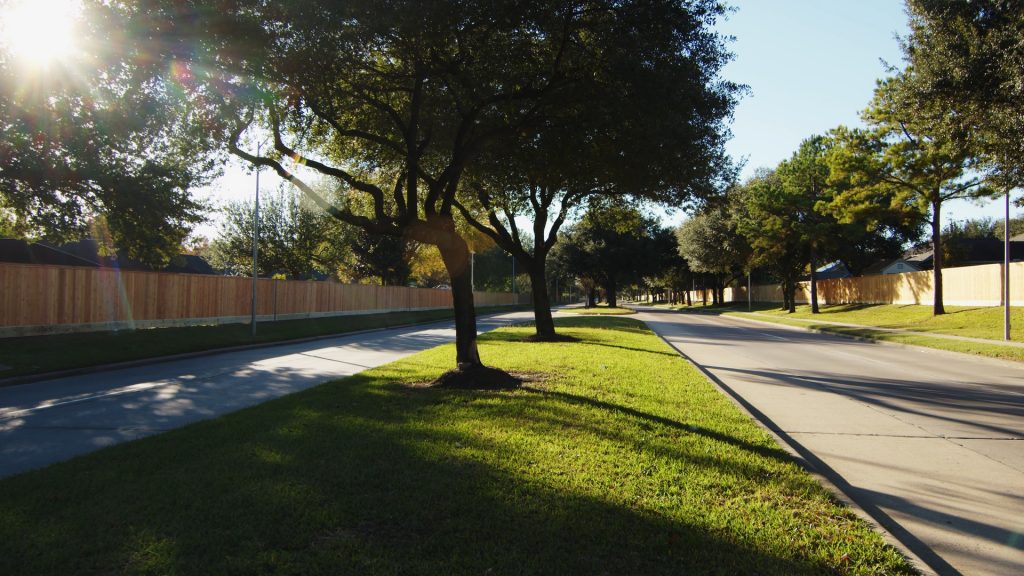Fences for HOAs
Fences for Homeowners Associations: What You Need to Know

If you’re a homeowner with a Homeowners Association (HOA), you know one of the most frequent and important projects undertaken by the association is maintaining and upgrading the fences around their properties. But what should HOA residents know and understand when discussing fences, and finding the right ones to suit their property? Knowing your options, how to select the right fence, and how an HOA can maintain what they choose, is essential. This blog post will cover just that, providing the essential information every HOA resident needs to know when it comes to fences.
Regulations and Guidelines of Fences for HOAs
When it comes to the regulations and guidelines surrounding fences for Homeowners Associations (HOAs), there are many factors to consider. To ensure that the neighborhood is uniform in appearance, and that all residential areas complement one another, HOAs often have specific regulations regarding both size, style and construction of fences.
The majority of HOAs require some form of notification prior to construction or major renovation of a fence, especially if it is located along common areas such as driveways or sidewalks. In order to guarantee that all members of the community comply with their HOA’s rules and regulations, owners must often submit either a sketch or full blueprint containing the exact measurements according to scale and size. Furthermore, detailed instructions about the materials used for construction and/or installation may also be necessary, including where it will be sourced from.
Additionally, when it comes to design, there are usually strict limits set by HOAs on the height of the fence as well as any ornamentation that might be added. Those wishing to install ornamental features should contact their local HOA office to find out what they are allowed to install.
In sum, due to their own unique regulations and guidelines, installing fences in a Homeowners Association requires careful consideration of precise details throughout each step of the process.
What Materials and Design Must be Selected
When it comes to selecting the materials and design of a fence for a homeowner’s association, there are a variety of simple and intricate decisions that must be made. The material choice is especially important, as each type of fencing has varying levels of durability, cost, and even aesthetic value. Materials can range from basic PVC and wood options to fancier aluminum and wrought iron options that have extra style elements included.
The design of the fence can also have a major impact on its overall appearance within the community landscape. Pickets, lattices, panels, jigsaw patterns, and arches are all different options available in many types of fencing. Moreover, some associations opt for open sections which can still provide safety without impeding upon landscapes or outdoor living opportunities for homeowners.
When it comes to making this decision for an individual homeowners’ association, there will likely be debate among stakeholders regarding both the materials and design. Regarding materials, proponents of more durable—and usually more expensive—options may argue that these will not require frequent repairs or replacements over time and accentuates properties with greater value. On the other hand, opponents might counter that cost savings associated with less expensive materials is paramount given tight budgets and visual aspects of certain types may be poor. Regarding design decisions, some may suggest that decorative elements such as curves or lattices soften the look of fencing while others may feel that straight lines are better suited to creating a uniform appearance across the community.
The decision about what materials and design should make up a fence for a homeowner’s association should be thoroughly thought through before anything is settled upon.
What are the Permitted Specifications for Size
When it comes to fencing for Homeowners Associations, the permitted specifications for size must be considered. These requirements vary from jurisdiction to jurisdiction, so it is important to check with the local governing office or homeowners’ council before installing any type of fence. Many ordinances provide specific measurements for front, side, and back yard fences.
Height is usually measured from the ground level, and restrictions may limit the total height of a fence in either feet or inches. In general, many jurisdictions allow fences no higher than six feet; however, some jurisdictions may permit fences up to eight feet tall in certain areas. It is also important to note that shorter fences may be allowed on property boundaries along public streets and sidewalks, while taller fences may be required between two private properties.
The other agreed upon standard size requirement for most HOAs are widths or opacities of fences. Widths are typically limited by the overall coverage of an area; where a greater amount of coverage is desired, a narrower portion of fencing must be used. Common widths for residential fencing range from three to eight feet wide, although some HOAs may allow widths up to twelve feet wide in certain areas. Restrictions on opacity most often specify how much visibility is allowed through a section of fencing; typical HOAs require not more than 25% opacity, meaning that they require at least 75% visibility through the slats or pickets of a fence panel.
In short, when considering an HOA’s permitted specifications for size in terms of fence installation and maintenance, it is essential to research the local ordinances and regulations as well as observe any existing community covenant regulations before installation begins. By understanding these requirements ahead of time, homeowners will be better prepared and equipped for the process of adding a fence to their home’s landscape.
Types of Fences for HOAs
When considering the types of fences for Homeowners Associations (HOAs), it is important to think about aesthetics, operation, costs, repair and maintenance. There are three main types of fences available, which include wood, metal, and vinyl. For wood fencing, a variety of woods are typically used including cedar and spruce. Wooden fences look great, provide sound barriers and privacy from neighbors. However, wood is susceptible to rotting and termites if not maintained regularly. Metal fences can be wrought iron or aluminum and provide a sense of privacy with the added design element that some HOAs prefer. Additionally, metal fences are low maintenance compared to wooden fence but on the other hand they do not provide a sound barrier like wooden fences do. Finally, is vinyl fencing. Vinyl fence offers a combination of function and beauty at a lower cost than both metal and wood options. And while still providing the feeling of privacy and security vinyl fencing requires minimal maintenance while still protecting against both wind and snow damage over time.
Given the variety in cost, materials, and appearances among each of these fence types, every HOA association should carefully consider what will work best for their community before installation. Clearly there is no one perfect solution when it comes to choosing the type of material for your fence so weighing the features versus drawbacks for each option is essential for making an informed decision about what may work best for your community.
Leading into the following section about ornamental fences, regardless which type of fence you choose understanding when and where to install ornamental touches becomes important for overall aesthetic effect as well as adding value to all homes within an HOA development.
Ornamental Fences
Ornamental fences are essential for any homeowner’s association that seeks to maintain a predetermined aesthetic for private properties. The primary purpose of ornamental fencing is decorative, rather than utilitarian or security related. Ornamental fencing can be made from low-cost materials like aluminum and PVC or made from more expensive materials such as cast iron, steel, and wrought iron. A popular ornamental fence option is the picket fence, a type of fence with vertically aligned wood boards that often come in pre-made panels to simplify installation.
The debate over ornamental fencing centers on both their aesthetics and practicality. On one side of the debate are homeowners who prefer strict enforcement of regulations governing the use of ornamental fencing materials, heights, and styles to maintain uniform appearances across a neighborhood; proponents argue this kind of regulation creates a sense of homogeneity and cohesiveness among properties. On the other side, individual property owners may want to express their own style preferences through relaxed restrictions; proponents argue that allowing greater freedom allows for unique expressions that uphold property values while introducing visual interest and diversity.
When navigating the debate over ornamental fencing, homeowners associations should consider their need for community aesthetic standards balanced with individual freedoms over property usage—allowing members to express themselves with personalization under reasonable restrictions.
Decorative Fences
Decorative fences are growing in popularity among homeowners’ associations as they add to the aesthetics of the neighborhood while still providing security and privacy. While selecting a decorative fence, it is important to consider factors such as climate, location, durability, and even the legal requirements of the area that must be followed.
While decorative fences certainly have their advantages, there are potential drawbacks which must be carefully evaluated before investing in decorative fencing. Decorative fencing often has a higher price tag than traditional fencing options. This may make them out of reach for many homeowners’ associations or individual homeowners on a tight budget. Additionally, decorative fencing typically requires more regular maintenance than other types of fences, including periodic staining or painting to maintain its appearance and structural integrity.
Lastly, decorative fencing can be subject to local regulations concerning height and spacing. While these regulations vary by region, some areas may not allow certain types of decorative fencing due to their higher visibility or the potential for an obstruction of view for individuals who live near the property line. Homeowners should check with their municipal governments to determine what type of decorative fence is permitted before construction begins.
Despite the potential drawbacks associated with decorative fences, they remain an attractive option for many homeowners’ associations as they provide an aesthetically pleasing way to increase privacy and security while improving property values in the area.
Durable and High-Quality Materials
When it comes to finding quality fencing for Homeowners Associations, you must consider the types of materials used. Most commonly, fences are made from wood, vinyl or metal, each with their own unique advantages and disadvantages.
Wood is a very durable and long-lasting material that can be seamlessly blended into any surrounding landscape. However, wood requires regular treatment and maintenance to protect against rot and insect damage. If not maintained properly, wood can quickly become unusable over time.
Vinyl is an extremely strong material that needs minimal upkeep, making it one of the most popular choices in fencing. Vinyl is also resistant to chemicals, corrosion and sunlight and retains color longer than many other materials. Additionally, since it requires little maintenance, it is generally cost effective in the long run. On the other hand, due to its inability to be painted or stained and potential hazardous health effects, some people opt not to use vinyl as a fencing choice.
Metal is another popular option, which offers even greater durability than wood while maintaining the elegance of wood. It is also economical over time because it does not require as much painting or staining as traditional fencing materials. Unfortunately, typical metals tend to rust depending on exposure to harsh weather conditions so special coatings will need to be applied as an added measure of protection.
Given the above pros and cons for each material, it’s important for homeowners’ associations to weigh the options when choosing fences for their property. Aesthetic considerations such as color and texture should also be considered when selecting durable and high-quality materials for your fence.
Aesthetic Considerations for Fencing
When installing fences around an HOA community, aesthetics should be top of mind. Many homeowners’ associations may even have rules in place dictating what types of fencing material residents can install. There are a variety of materials available as fencing options from wrought iron to natural wood. As the fence serves as both a visual anchor and the first impression of the neighborhood, choosing the right material is important.
Wrought iron and other metal structures give off a modern, classy vibe, which can suit many neighborhoods perfectly. They are also highly durable and require limited maintenance, making them a great choice for busy HOAs or aging communities. However, they tend to cost more and can find themselves out of sync with neighborhoods made up of smaller or older homes.
Wooden fences, on the other hand, tend to cost less but require regular upkeep and maintenance over time to maintain their aesthetic appeal. Some HOAs may also impose restrictions on what kind of wood or how tall a fence can be, which changes the scope of design that some homeowners will be able to consider. Wooden fences do tend to offer more flexibility when it comes to height or shape while still fitting within a lot size policy since they are not permanent fixtures like metal fences can be.
Ultimately, determining the best fencing option for an HOA depends on budget constraints, aesthetic preferences, and desired outcome. Each choice has its pros and cons, and consideration should be given to all variables before committing to installing a particular type of fencing for an association’s property line.
No matter the material chosen by an HOA board, careful thought must go into aesthetics in order to maintain a pleasant curb appeal and unified look throughout the entire neighborhood.
Landscaping & Property Considerations
Landscaping and property considerations are an important factor to consider when constructing a fence for any homeowner’s association. Fences add to the overall aesthetic of a home, so it is necessary to keep in mind the existing look and feel of the neighborhood. HOA boards typically require that all homeowners with fences maintain a uniform appearance acceptable to most of the other homeowners in the area. This often results in restrictions on fencing materials, height, color, and style.
When considering what kind of fencing is appropriate for an HOA, homeowners need to consider any landscaping or topography issues that could potentially pose problems for their fence. For instance, fences that are placed too close to slopes or bodies of water may not be safe or effective. They should also be aware of any landscaping details such as trees or shrubs that could need special consideration when installing a fence.
It is also important for homeowners’ associations to make sure that all fences fit within their bylaws and comply with safety regulations from local municipalities. It is important to determine if there are any requirements that must be met for a new fence to be built. Additionally, HOAs may have rules regarding pool fences which are crucial for maintaining proper protection and safety around swimming areas. All these factors should be considered when choosing the best fence design and materials for an HOA project.
Ultimately, Landscaping & Property Considerations are key components for determining what type of fencing is most suitable for a particular HOA project. With an understanding of local laws and regulations along with environmental factors, homeowners can confidently choose a fence that meets both safety standards and aesthetic expectations while staying within their budget.
Requirements for Building a Fence for an HOA
When considering a fence for a homeowner association (HOA), there are certain requirements that need to be considered. First, potential fence owners must understand the HOA’s regulations regarding fencing materials and styles. Different HOAs allow different types of fencing options ranging from prefabricated particleboard to more expensive wrought iron. Additionally, some restrictions may involve fence height, placement and even color. Any fence in an HOA enclave should create a unified look for the neighborhood, as well as enhance the property values of all its members.
Once a homeowner decides what kind of fencing, they wish to install, it is necessary to obtain approval from the HOA before they can begin construction. The HOA will review the plans and possibly make changes to ensure that the finished product meets with standards or applicable rules set by the homeowners’ association. Depending on where a person lives, approval processes can take anywhere from a few days to several weeks or longer. Many HOAs also require that all consensually agreed upon fences be constructed by reputable fence companies and provide proof of professional installation upon completion.
Some HOAs may even require individuals to contact local municipalities and utility companies prior to beginning construction on any proposed fence in order to assure that property lines are properly identified and to confirm permission for any underground utility lines per neighborhood ordinance.
While these requirements do add time for approval and planning when building an HOA fence, they can also be beneficial because they help maintain consistency and uniformity within an association’s community for both stability and aesthetic appeal in equal measure. Consequently, understanding requirements for building a fence for an HOA is important; however, there are other factors related to fencing that potential buyers should consider including fencing options available.
Fencing Options for Homeowners
When deciding on a type of fencing solution for your homeowners’ association, there are a variety of options to choose from. Which fencing material is best for your association depends on the desired look, location, and budget of the collective homeowners.
Wood Fences
Wood fences provide the most traditional look with the most customization opportunities. Wood is also generally the most affordable material option for fences and lends itself to a variety of designs due to its versatility and malleability. The downside with wood is that it requires more maintenance than alternative materials and can be prone to rot if not treated correctly or sealed, which adds to ongoing costs.
Vinyl Fences
Vinyl fences provide an alternative to wood that require much less maintenance over time. Vinyl is more expensive upfront but will last significantly longer, making it a more cost-effective choice over time. Vinyl also provides many more customization options in terms of colors and design. The downside to vinyl is that it can be easily damaged by impact, making it more susceptible to damage than wood or metal materials. It also doesn’t offer as many decorative details as wood — so if you’re looking for something fancy or unique, this may not be the right choice for you.
Metal Fences
Metal fences provide increased security compared to other fence materials and are generally the longest lasting option available. Metal is also the most immune to weathering conditions — meaning it won’t corrode or rust like wooden or vinyl alternatives do over time. The downside with metal fencing is that it can be very costly upfront and offers limited customization in terms of colors and styles, making it less desirable from a decorative standpoint.
Ultimately, when choosing which type of fence material is best for your homeowners’ association, you must weigh all factors before deciding upon a solution. Consider both aesthetic quality as well as long-term maintenance costs and how that impacts the group’s budget when selecting an appropriate material.
Frequently Asked Questions
What are the most common fencing materials and designs used in HOAs?
The most common fencing materials and designs used in HOAs are metal, vinyl, and wood. Metal fencing is a great way to add an extra layer of security to a home due to its strength and durability. It is also low maintenance and comes in a variety of designs and colors. Vinyl fencing is a popular choice because of its ease of installation, cost-effectiveness, and wide range of styles. Wood fencing offers much more aesthetic appeal as it can be stained or painted to match the home’s aesthetic and comes in several different styles. While all these materials offer great protection, the design choices are limitless since they can be tailored to fit any homeowner’s specific needs and budget.
Are there any specific regulations or restrictions on fence heights in HOAs?
The regulations and restrictions on fence heights in HOAs vary depending on the specific rules of that HOA. Generally, fence heights are limited to between 3 and 6 feet, with some HOAs permitting 7-foot-tall fences in certain areas. Additionally, many HOAs prohibit the construction of “unsightly” fences that include barbed wire, razor wire or electric fences. Some HOAs allow homeowners to install taller or more decorative fences if they obtain approval from the HOA board and a building permit from the local government. Ultimately, it is best to check with your local HOA to determine their policies and regulations regarding fence heights to ensure compliance.
What criteria must a homeowner association consider when approving fence proposals?
When a homeowner association is considering a fence proposal, the important criteria should include safety and security, aesthetics, cost, and building codes and regulations.
Safety and security are critical when building fences in an HOA community. Chain-link or wrought iron fences are usually considered the most secure, as they can be fitted with a secure locking system. Privacy fences also offer more security as they prevent outsiders from seeing into the yard.
Appearance is also key, since a quality fence should complement the existing neighborhood architecture. The materials used should fit within the association’s guidelines to ensure that the finished product maintains the neighborhood aesthetic.
Cost should also be another factor for HOAs to consider when approving a fence proposal. It is very important for HOAs to work within each individual owner’s budget while adhering to community standards. Additionally, HOAs need to consider any service fees associated with installation and use of the fence material, such as maintenance and repairs over the life of the fence.
Finally, HOAs need to consider all applicable building codes and regulations when approving fences in their communities. Regulations vary by municipality, so it is important for HOAs to understand their local laws before making any decisions about what type of fence materials can be used in their neighborhoods.








